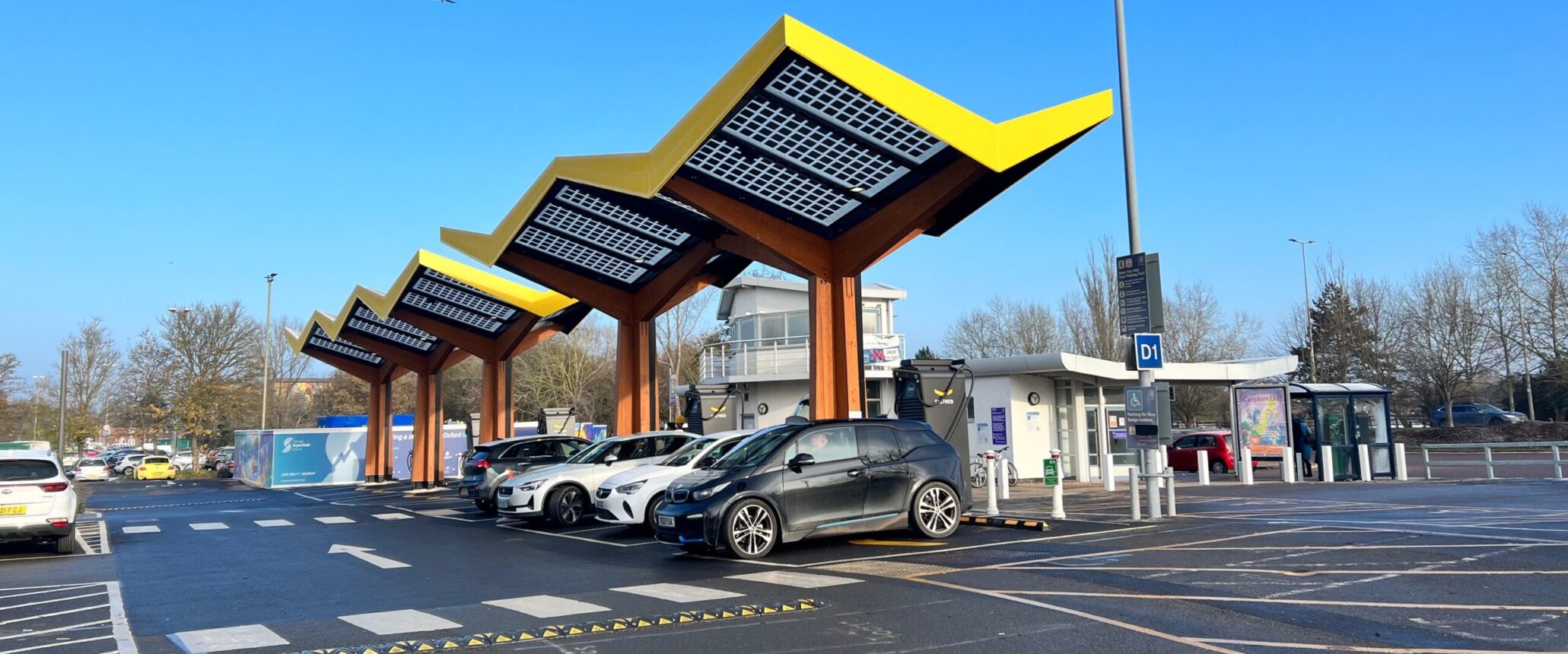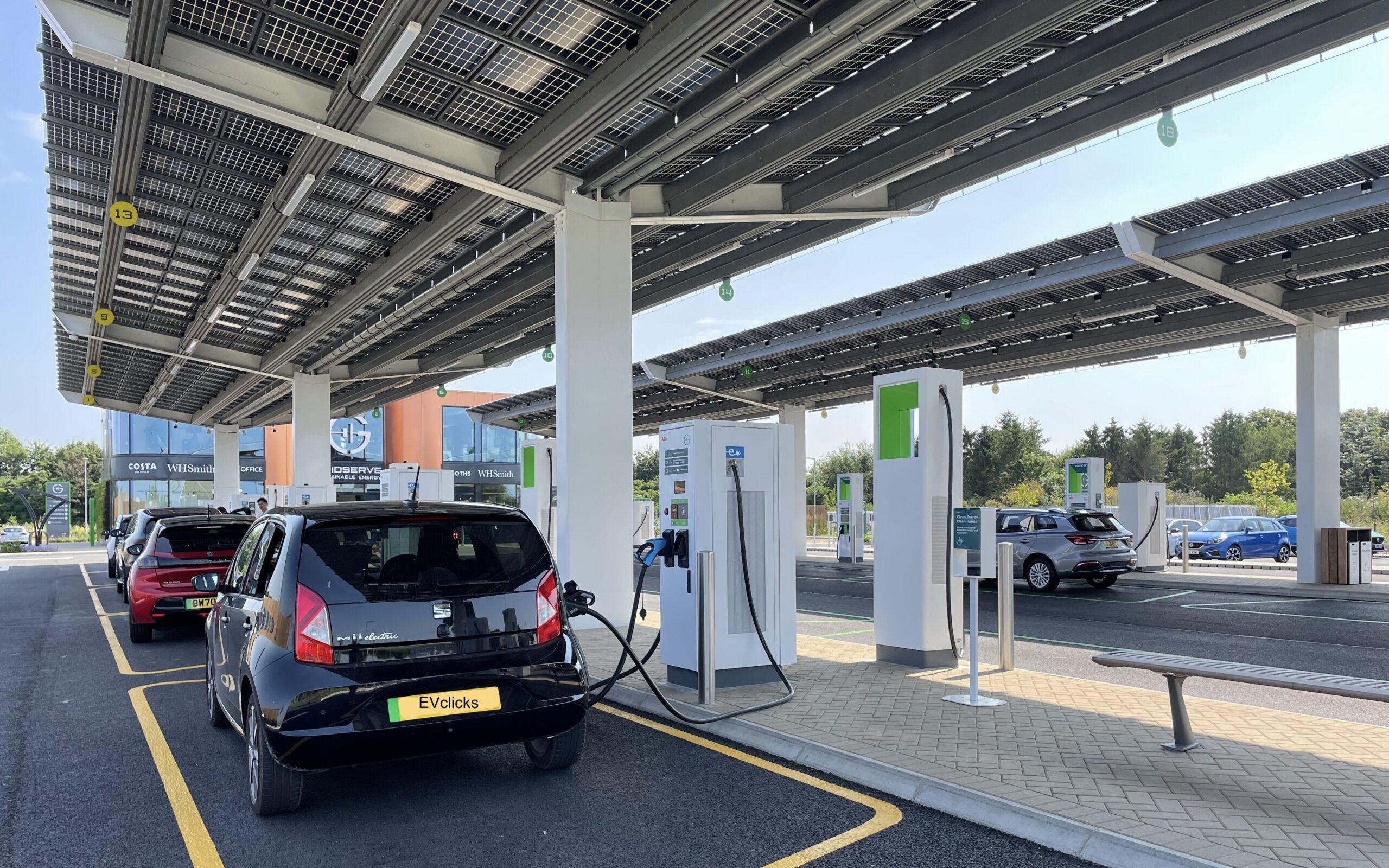


In this blog post, Maz Shar does a deep dive into the recently unveiled Public Charge Point Regulations 2023.
Maz is an EVA England volunteer who spent his first 40,000 electric miles relying on public charging infrastructure. He has a keen interest in the UK’s charging infrastructure and actively engages in discussions about improvements on social media, where you might know him as @EpicWinningMaz.
As an association championing the interests of EV drivers, we are excited to share developments that will positively impact your EV experience. The Public Charge Point Regulations 2023 bring exciting improvements to charging, making the EV experience more convenient, reliable, and user-friendly.
You may remember that in 2021, we conducted a charging experience survey among our members. We happily let you know that the community’s feedback and insights significantly influenced the shaping of these regulations. As well as your membership and funding of the EVAE, your input helps us advocate for improvements in charging infrastructure and address key concerns.
In this post, I will spend some time on each aspect of the new regulations. I believe we can phrase these as enabling consumers to answer these three critical questions about their EV charging experience:
While this legislation marks a significant step forward, it does not directly address accessibility of EV charging for all. Although the PAS-1899 standards are incredibly useful, there’s no legal requirement for their implementation. We would welcome any prospective legislation that makes progress in this area and we continue to raise this issue wherever we can to ensure EV charging is accessible for everyone.
The regulations refer to “public charge points” and “rapid charge points”, so let’s start by clearing up what they mean:
It’s important to note that some regulations apply differently between three categories of public charge points:

The regulations require charge point operators to hold and provide specific data related to public charge points. This includes accurate location data, reference data, and availability data. The charge point operators will make this data available in a standardised (Open Charge Point Interface or OCPI) format, free of charge, to the public. By enforcing a particular standard and removing barriers to access data, this should encourage innovation and enable better tools. This should enable EV drivers to more easily find accurate information about chargers nearby.
Reference data refers to information about a charge point that does not change frequently, for example:
Availability data is information relating to whether the charge point is working and available to use.
It’s a requirement that charge point operators update the EVSC status within 30 seconds of a status change. This implies that once an operator is informed of a status update, its open data should reflect this change within 30 seconds. I suspect this is to avoid operators providing old data that is not relevant or timely. By ensuring data is updated, this should provide EV drivers with more confidence that a charger is available. However, there’s no strict definition of what an “available” charger means and this could vary between charge point operators.
Timing: Open data must be available 12-months after the date these regulations are in place.
Penalty: Up to £10,000 per charge point.
Reliability is a crucial factor for EV charging, and the regulations ensure that charge point operators maintain high standards. The mandate requires each operator’s rapid charge point network to maintain, on average, a 99% reliability rate annually.
Reliability is based on the charger’s status, which is classified into three categories: Reliable, Not Reliable, or Exempt for Measurement. These statuses are based on the data received from an Electric Vehicle Supply Equipment (EVSE) via OCPI.
Possible OCPI statuses include:
| OCPI Status | Description | Measurement |
|---|---|---|
| Available | Able to commence a charging session | Reliable |
| Charging | In use | Reliable |
| Reserved | Reserved for a particular driver and unavailable for others | Reliable |
| Inoperative | Not yet active or temporarily not available for use | Downtime |
| Out of Order | Out of order or some component is broken or defective | Downtime |
| Unknown | No status available so it could be offline | Time exempt |
| Blocked | Physical barrier such as a vehicle | Time exempt |
| Planned | Not yet operational but a planned date exists | Time exempt |
| Removed | No charge point at this site | Time exempt |
A single physical charge point includes an EVSE that can charge one car simultaneously. For chargers that have two bays and can dual-charge, these are 2 separate EVSEs.
The reliability calculation is as follows:

Charge point operators must regularly submit reports concerning reliability and support to the Secretary of State. Operators are expected to report the total number of charge points, the reliability of their rapid charge point network, and detailed information about each individual charge point’s reliability, location, and status. While this information may not directly benefit EV drivers, the guidelines do clarify that enforcement action for frequently unusable charge points will be proportionate. These reports can be considered a qualitative measure to ensure reliability alongside the quantitative metrics.
As a whole, I believe so. However, there are a few implications to highlight:
Imagine you arrive at a charge point and it’s unresponsive. Clearly, this would be “Out of Order.” However, there are other situations to consider: the payment terminal may be faulty but charging is possible with an RFID card, charge sessions may end abruptly, the charger might provide power at a slower rate than expected, or it may report being Available but have no recent record of successful charge sessions. These scenarios highlight the complexity in defining an available charger. This will only be as good as the CPO’s ability to detect faults.
Additionally, by considering a network average, larger CPOs can get away with having whole sites down for most of the year. To achieve 99% reliability each charger can be not functioning for 87.6 hours per year. For a network of 100 chargers, that’s 8,760 hours but for a network with 10,000 it’s 876,000 hours per year. In theory, an operator could keep a 99% reliability rating even with 100 out-of-service chargers annually or 1,217 monthly. However, a 500-charger network could only afford 5 down annually, or 61 monthly.
While it’s a critical starting point, I would like to see further measures, like assessing site reliability and defining ‘working’ chargers more strictly. EVA England will be part of the government team that’s diving deep into the nitty-gritty of reliability. There’s still a bit of homework left on clarifying definitions and figuring out the best ways to put plans into action.
Timing: Reliability must meet 99% in a given year 12-months after these regulations are in place.
Penalty: Up to £10,000 per network.
Additionally, charge point operators must offer a staffed telephone helpline, available 24/7, to assist EV drivers with any issues or inquiries related to the functionality of the charge points. The support line should be cost-free via an 0800 number, and the details of this helpline must be on display at the charging site for easy access.
CPOs are responsible for resolving issues within their control (e.g. software issues) however issues out of their control (e.g. power outages) are acceptable. Quarterly reports to the Secretary of State will highlight the number and types of support calls, resolution times, unresolved cases, and reasons behind them. Although this does not directly help EV drivers, I hope this will provide visibility to and enforce accountability for poor customer service.
Timing: A helpline must be available 12-months after these regulations are in place.
Penalty: Up to £10,000 per charge point.
To promote transparency and enable informed decision-making, the regulations mandate clear pricing display at public charge points. The total price for charging an EV must be prominently on display in pence per kilowatt-hour (p/kWh), either directly on the charge point or through a separate device. The separate device includes an app provided there are no sign up requirements. This regulation ensures that EV drivers have a clear understanding of the cost before initiating a charging session, preventing nasty surprises.
In the case of bundled pricing (e.g. parking included), the equivalent price for charging must be on display in p/kWh. This does not need to include overstay fees and so this should still be an effective way to avoid people holding up a charger longer than necessary.
Timing: Immediately after regulations are in force.
Penalty: Up to £10,000 per charge point.
Picture this: You pull up to a public charge point, eager to charge your electric vehicle. Instead of searching through a pile of RFID cards or going through another cumbersome sign-up process, you pull out your bank card and tap it on the charger. If you’re like me, you would expect this to be a reality already but an alarming number of networks (even rapid charging ones) do not support contactless payments.
After the regulations come into force, Charge Point Operators (CPOs) operating the following chargers must support contactless card payments:
Support for contactless card payments must be provided per site and not necessarily per charge point. This could mean:
Note that public charge points do not include those intended for exclusive use by specific vehicle manufacturers and so Tesla only superchargers won’t need contactless. However, any existing sites that become open to all EV brands will need to have contactless chargers retrofitted.
Timing: For new public charge points and existing rapid charge points, 12 months from the date regulations are in force. For an existing private charge point that becomes a public charge point, the 12-month period starts from the date the charger becomes public.
Penalty: Up to £10,000 per charge point.
Now, let’s dive into the rationale behind the choice to require contactless payment for chargers above 8kW and not 7kW. It’s all about finding the right balance. Rapid chargers, are typically found in public locations and are commonly used for faster charging. By prioritising contactless payment for these chargers, the regulations aim to enhance the charging experience at locations where EV drivers frequently rely on quick top-ups.
However, we understand that not all charging needs are the same. Some EV owners prefer lower-power chargers, such as those rated at 7kW, for overnight charging at home. While it may seem puzzling that contactless payment isn’t mandated for these chargers, it’s essential to consider the trade-offs. The cost of having lower-power chargers with contactless payment capability may outweigh the demand and convenience it provides. This leaves a tricky predicament with 22kW units which are arguably not that different to 7kW in terms of cost and use case but were decided to be included. Some may feel this could hamper future installations of 22kW and 3-phase AC charging, however, the option to have a single contactless terminal for all charge points leaves some flexibility.
Now maybe you’re someone who regularly uses charge points below 8kW or someone who prefers to have all charging sessions billed through one or two providers. This is where the regulations promoting interoperability and payment roaming services add an extra layer of accessibility.
The regulations mandate that charge point operators must ensure that a person using any of its charge points is able to pay using a payment service provided by a roaming provider. It’s worth noting that the roaming provider could include a direct partnership with another charging operator. This could lead to a number of closed roaming networks that fragment roaming options and are only created to fulfill this requirement.
Timing: Roaming must be available after 24 months from the date these regulations are enforced.
Penalty: Up to £10,000 per charge point.
| Policy area | Requirements | Lead time (from the regulations coming into force) | Penalty |
|---|---|---|---|
| Contactless | New public charge points of 8kW and above and existing rapid charge points must offer contactless to consumers.Proprietary networks that open their charge points for public use will have one year from the date that the charge point becomes public to offer contactless. | One year | Up to £10,000 per charge point |
| Roaming | Charge point operators must enable consumers to pay through at least one roaming provider at their charge points. | Two years | Up to £10,000 per charge point |
| 99% reliability | Rapid charge points must be 99% reliable, measured as an average across each charge point operator’s rapid network. Information on reliability compliance must be published on the charge point operator’s website. | One year | Up to £10,000 per network |
| Helpline | A free to use 24/7 staffed telephone helpline must be available and advertised at all charge points. | One year | Up to £10,000 per charge point |
| Open data | All data must be accurate and charge point operators must use the Open Charge Point Interface (OCPI) to hold and open their data. Reference and availability data must be made publicly available and in a machine-readable format. Government bodies, Distribution Network Operators, Transmission Owners and Electricity System Operators must have access to all data. | One year | Up to £10,000 per charge point |
| Pricing metric | The total cost of a charging session must be displayed clearly in pence per kilowatt hour. The price can be displayed either on the charge point or through a separate device. | Immediately | Up to £10,000 per charge point |
The Public Charge Point Regulations 2023 are a significant step forward in improving the EV driving experience. From seamless contactless payments and enhanced reliability to transparent pricing and accessible data, these regulations empower EV drivers with greater convenience, reliability, and transparency. As an association representing EV drivers, we welcome these regulations and are excited about the positive impact they will have on charging experiences.
These regulations are a testament to the collective voice of our members and the commitment to enhancing sustainable mobility. But it’s not the end. EVA England is part of the working group seeking to refine the finer details on reliability also. Pushing the consumer experience further is an ongoing effort and highlights the importance of your membership and funding to continue pushing things further.
On this note, we have launched a new survey this week to understand current pain points and guide us towards what to focus on. If you’re not already a member, please do take a look at our membership and consider supporting the cause.
To learn more about the legislation you can check out Draft Public Charge Point Regulations 2023 Guidance and Public Charge Point Regulations 2023.
All pictures credit to EVclicks.